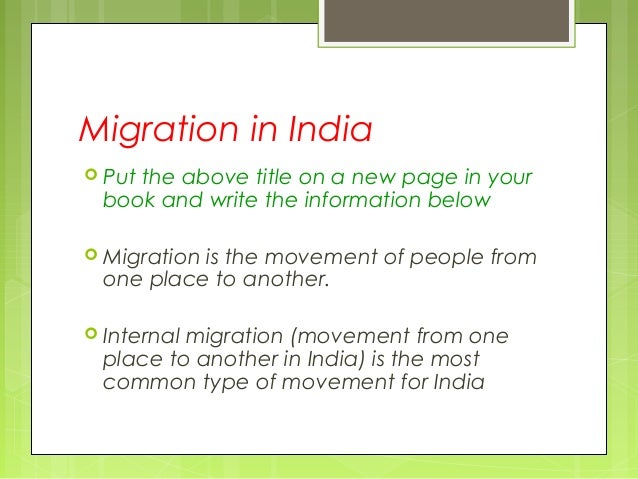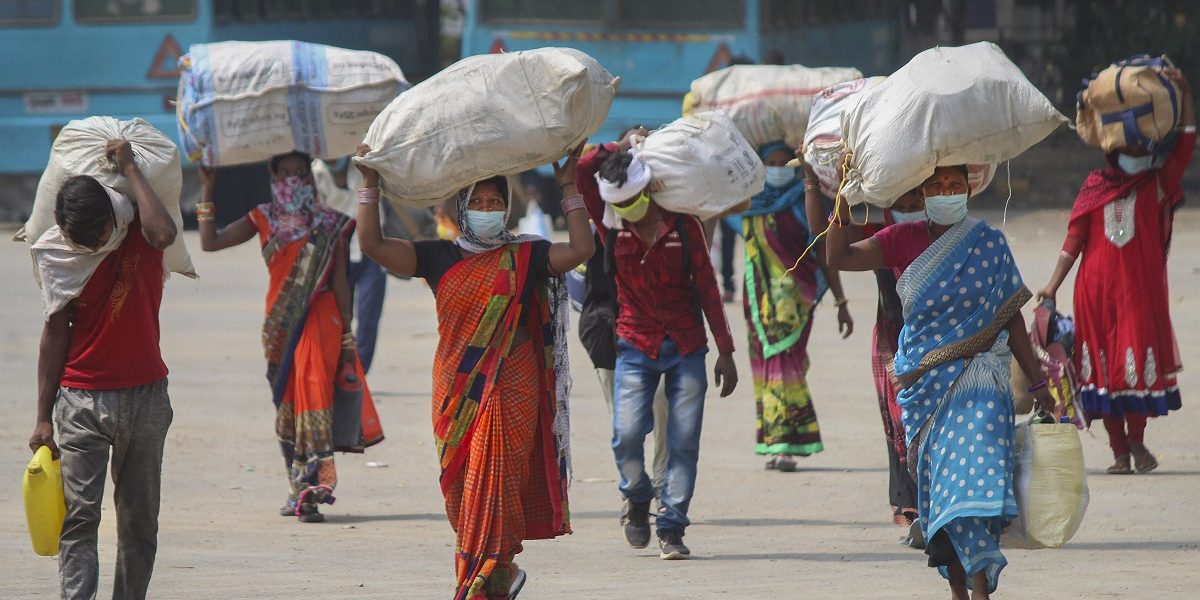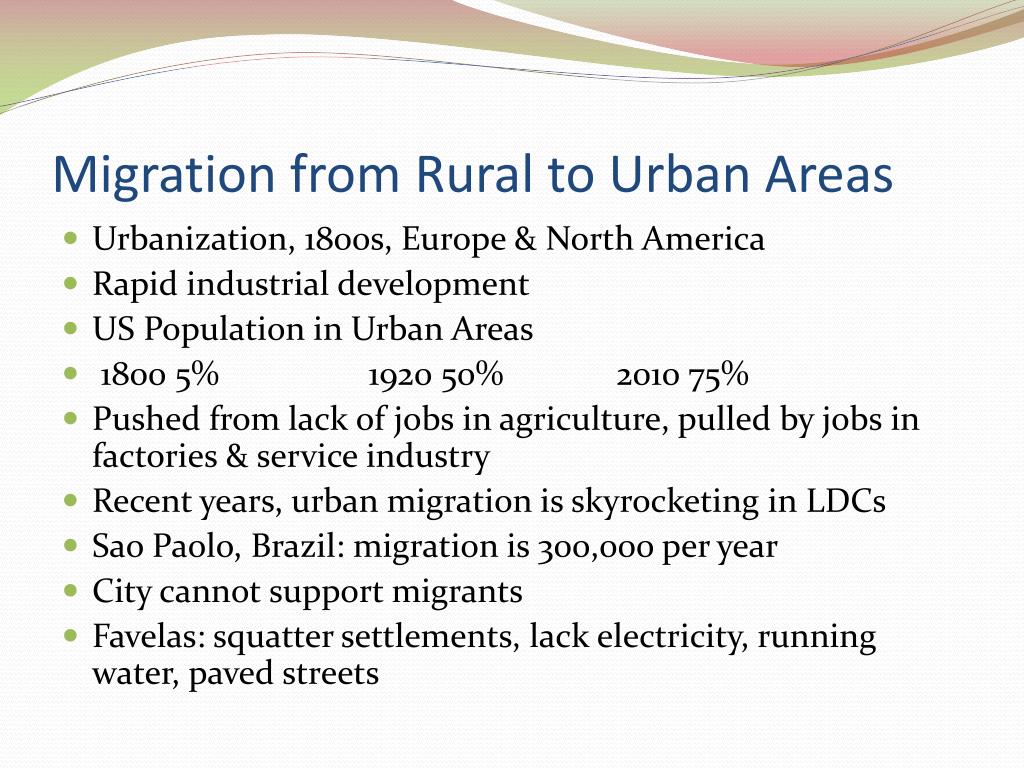Migration In India Presentation
| Introduction to Migration in India | ||
|---|---|---|
| Migration in India refers to the movement of people from one place to another within the country. It is a significant demographic phenomenon with diverse causes and consequences. Factors such as employment opportunities, education, marriage, and quality of life influence migration patterns in India. | ||
| 1 | ||
| Internal Migration in India | ||
|---|---|---|
| Internal migration within India is predominantly rural to urban, with millions of people moving from villages to cities in search of better opportunities. Economic factors, such as better job prospects and higher wages, drive internal migration. Push factors, such as lack of employment opportunities, poverty, and natural disasters, also contribute to internal migration. | ||
| 2 | ||
| Interstate Migration in India | ||
|---|---|---|
| Interstate migration involves movement between different states within India. States with high population densities, such as Uttar Pradesh, Bihar, and Rajasthan, often experience significant outmigration. Major destination states, like Maharashtra, Delhi, and Tamil Nadu, attract migrants due to better job prospects and economic opportunities. | ||
| 3 | ||
| Rural to Urban Migration | ||
|---|---|---|
| Rural to urban migration in India is driven by the allure of better employment and improved living conditions in urban areas. Migrants from rural areas often find work in the informal sector, such as construction, domestic work, and street vending. Rapid urbanization and industrialization contribute to the growth of urban centers and the subsequent influx of rural migrants. | ||
| 4 | ||
| Urban to Rural Migration | ||
|---|---|---|
| Urban to rural migration in India is relatively less common but occurs due to various factors, such as retirement, desire for a slower pace of life, or returning to one's hometown. Some individuals may choose to move back to rural areas to engage in agricultural activities or start small businesses. Urban to rural migration is often influenced by social and cultural factors, including the desire to be closer to family and community. | ||
| 5 | ||
| Impacts of Migration on Source Areas | ||
|---|---|---|
| Migration can lead to a decline in the labor force in source areas, particularly in rural regions. Remittances sent by migrants to their families in source areas can contribute to economic development and poverty reduction. Migration can also cause social changes, such as changes in gender roles and family dynamics, as well as the loss of skilled individuals from the source areas. | ||
| 6 | ||
| Impacts of Migration on Destination Areas | ||
|---|---|---|
| Migration can contribute to urban overcrowding, putting pressure on infrastructure, housing, and public services in destination areas. Migrants often face challenges such as discrimination, exploitation, and inadequate access to healthcare and education in cities. However, migrants also contribute to the economic growth of destination areas by filling labor market gaps and contributing to consumer demand. | ||
| 7 | ||
| Government Policies and Initiatives | ||
|---|---|---|
| The Indian government has implemented various policies and initiatives to address the challenges and opportunities associated with migration. The National Urban Livelihoods Mission aims to provide livelihood opportunities and social protection to urban poor, including migrants. The Inter-State Migrant Workmen (Regulation of Employment and Conditions of Service) Act, 1979, provides legal protection to inter-state migrant workers. | ||
| 8 | ||
| Future Trends and Challenges | ||
|---|---|---|
| With ongoing urbanization and economic growth, internal and interstate migration in India is expected to continue. Ensuring the welfare and rights of migrants, including access to basic services and social protection, will be crucial. Addressing the root causes of migration, such as regional disparities in development, will be essential for balanced and sustainable growth in India. | ||
| 9 | ||
| Conclusion | ||
|---|---|---|
| Migration in India is a complex phenomenon influenced by various economic, social, and cultural factors. It has significant impacts on both source and destination areas, presenting challenges and opportunities. Effective policies, initiatives, and inclusive development strategies are essential for harnessing the potential of migration and ensuring the well-being of migrants in India. | ||
| 10 | ||
| References (download PPTX file for details) | ||
|---|---|---|
| Sharma, A., & Mishra, S. (2018). Internal mig... Kundu, A. (2008). Inter-state migration and i... Ministry of Housing and Urban Affairs. (2021)... |  | |
| 11 | ||









